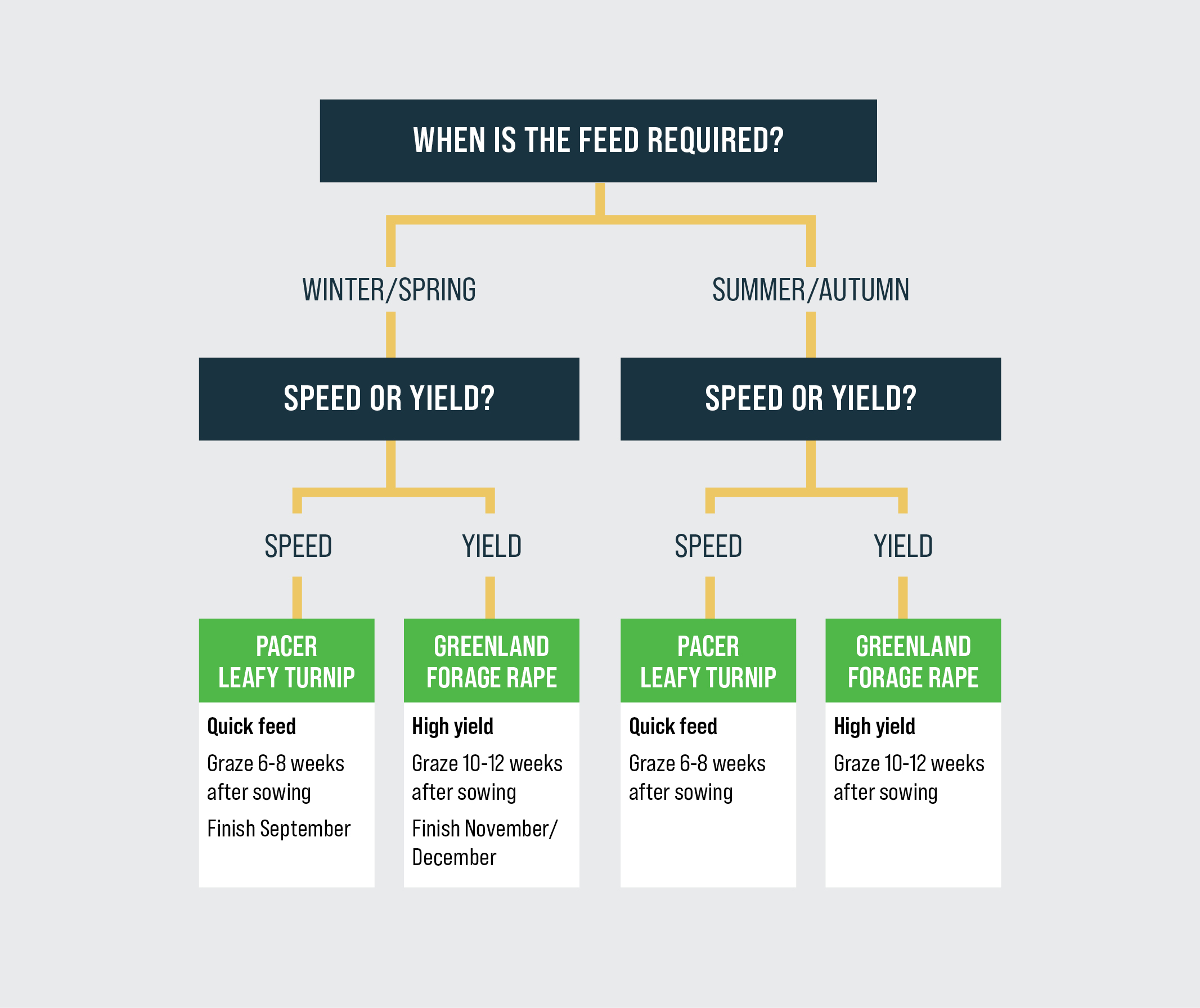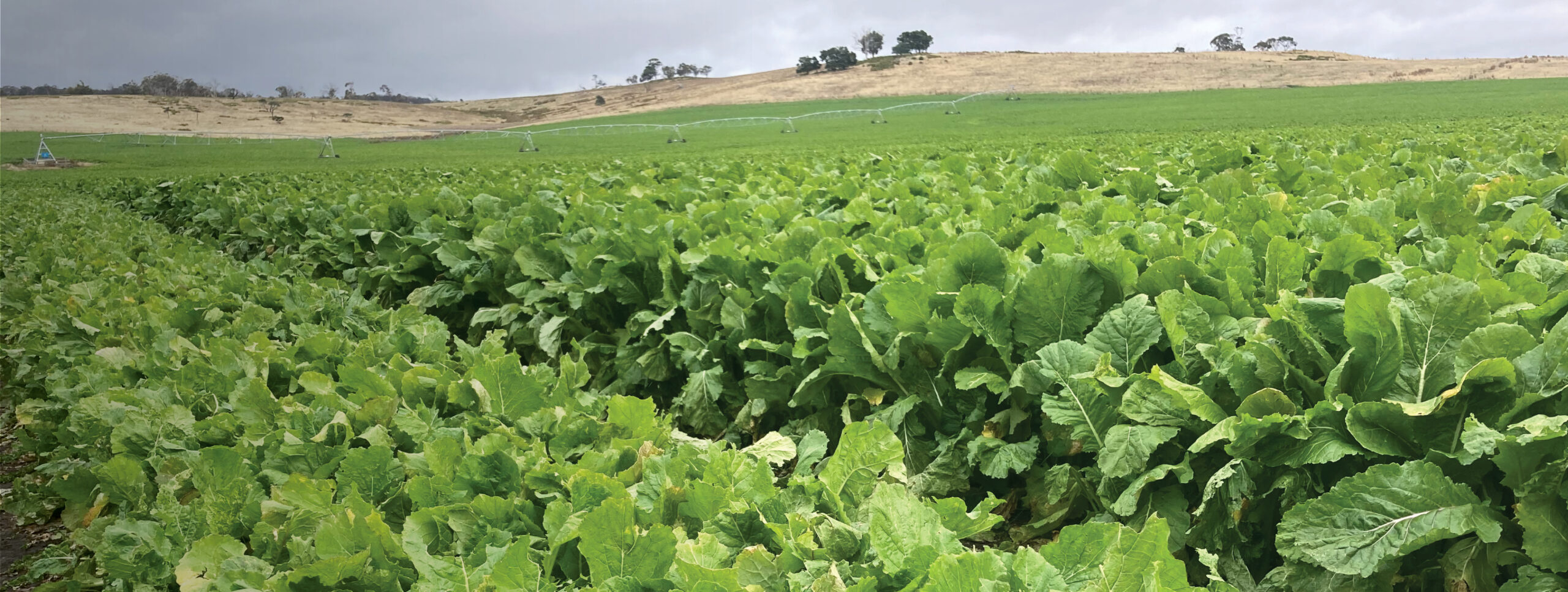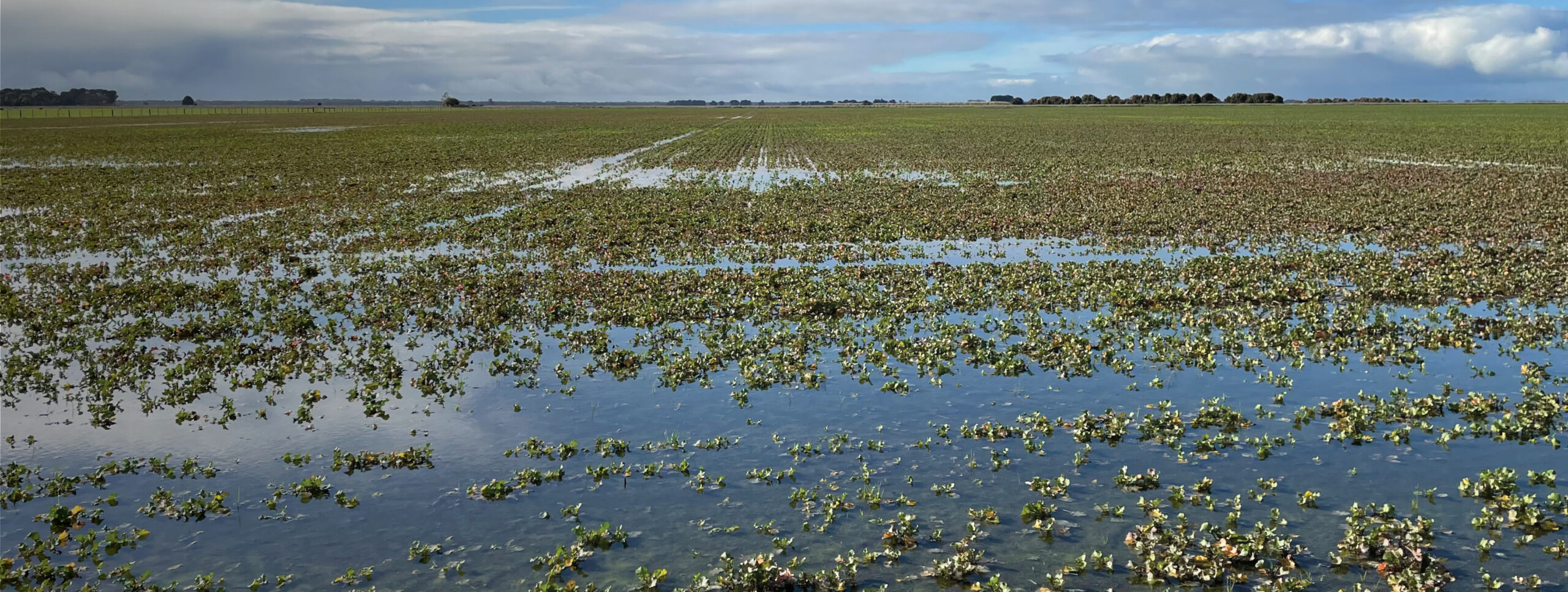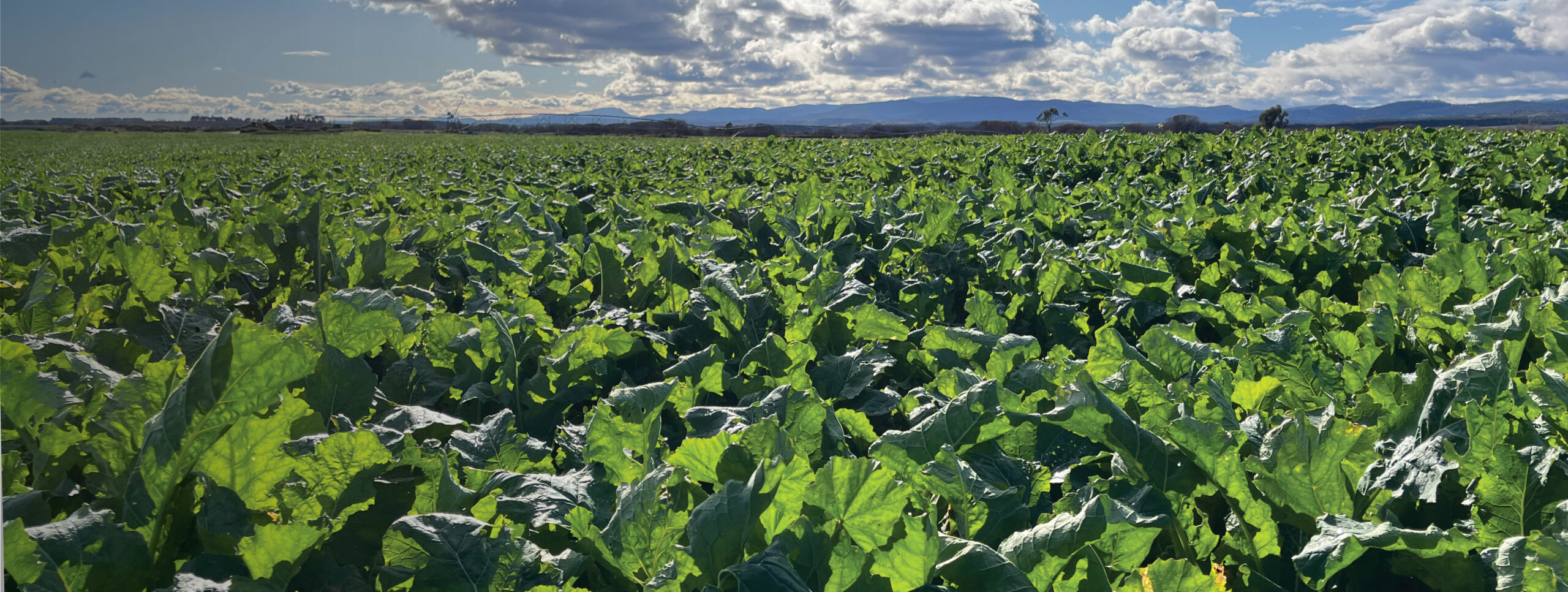Now’s the perfect time to sow a high yielding brassica
Take a look at our high yielding brassica varieties
Now’s the perfect time for growers to capitalise on current stored soil moisture levels and sow a high yielding forage brassica variety for standover feed in late spring and summer. Take a closer look at these versatile, high yielding brassica varieties from RAGT.

Forage brassica – general management
Maximising forage yield
• Forage brassicas will handle a broad pH (CaCl2 ) range from 4.6–8.6.
• Ensure up to date soil or plant tissue test information to identify potential nutrient deficiencies.
1. Weed and pest prevention
• Sow into a weed free seedbed.
• Spray any existing weeds with glyphosate and tank mix with insecticide for any pests.
• Consider pre-emergent application of Trifluralin if wireweed is likely to be a problem.
2. Sowing
• Brassicas should be shallow sown (5–10mm) and covered with roller, chain or mesh.
• Sow rape or leafy turnip at 3-5kg/ha, using higher rates for higher rainfall or rougher seedbeds.
• Sow with Triple Super into worked paddocks, use MAP or DAP if direct drilling.
• Sow with around 20kg P/ha, using low sulphur based fertilisers.
• Address any trace element deficiency, especially molybdenum and boron.
3. Monitor and treat for pests
• Forage rape is susceptible at emergence to pests, especially Redlegged Earth Mite
• We recommend using insecticide treated seed.
4. Apply Nitrogen 3–4 weeks after establishment
• To increase yields apply up to 60kg N/ha (125kg/ha Urea) 3–4 weeks after establishment.
• Do not apply nitrogen within four weeks of feeding off crop.
Get the best from your forage brassicas
Whether you’re looking for a quick feed or a higher yield, our versatile range is cultivated to give you options.



